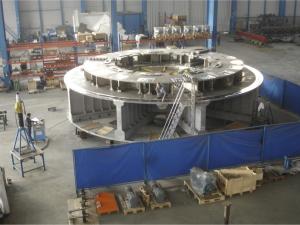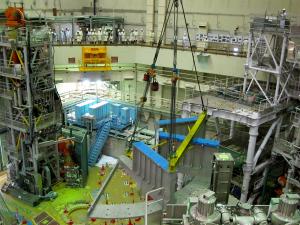JT-60SA: assembly begins in Naka
Anticipation had started to build already in November 2012 with the final pre-assembly of the cryostat base at the manufacturing facility. An accurate dimensional tolerance check was performed with a 3D portable laser tracker, and results proved to be satisfactory with low error under the limits.
The cryostat base was collected from the factory on 12 November and transported to the port. After loading the cryostat base on board the IYO, the ship set sail on 22 November and took on further cargo at other European ports before heading across the Atlantic and Pacific oceans via the Panama Canal. After the 18,000-km-long sea voyage, the cryostat base finally arrived at Hitachi port in Japan on 16 January 2013.
The transport from the port to the Naka Fusion Institute was conducted by JAEA in seven stages during the week starting 19 January. Transport was carried out before dawn on closed roads All seven pieces of the cryostat base were delivered to the assembly hall at the Naka Fusion Institute by 26 January.



